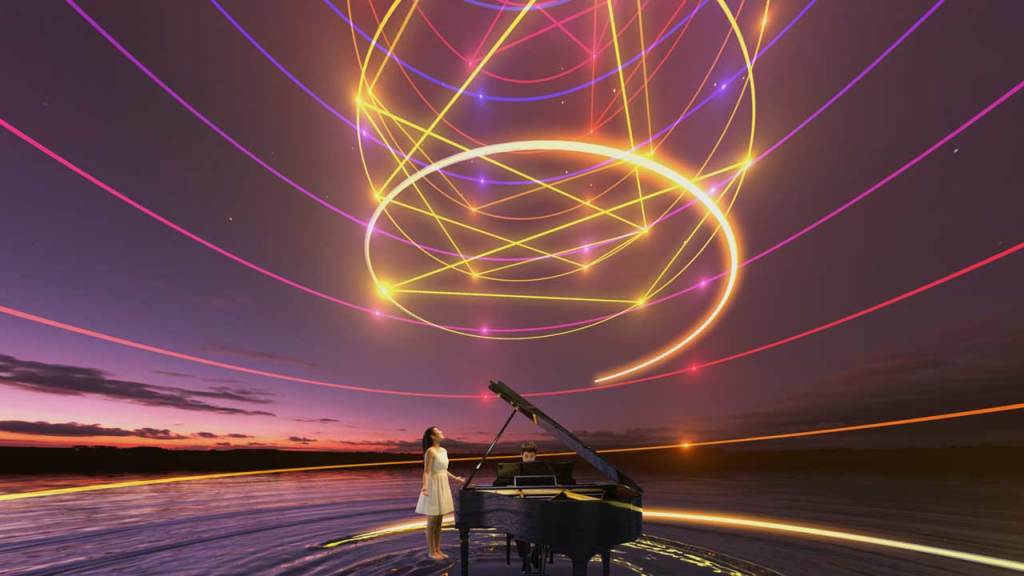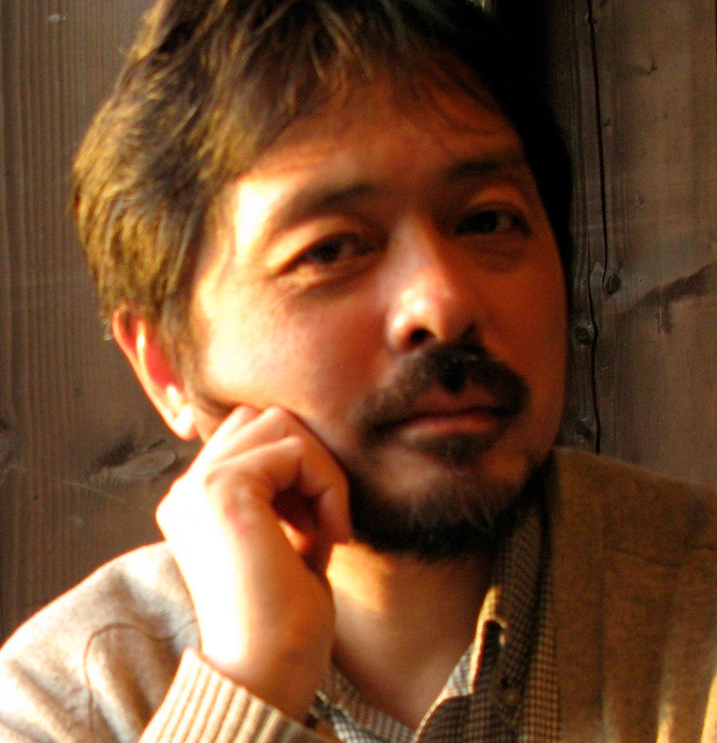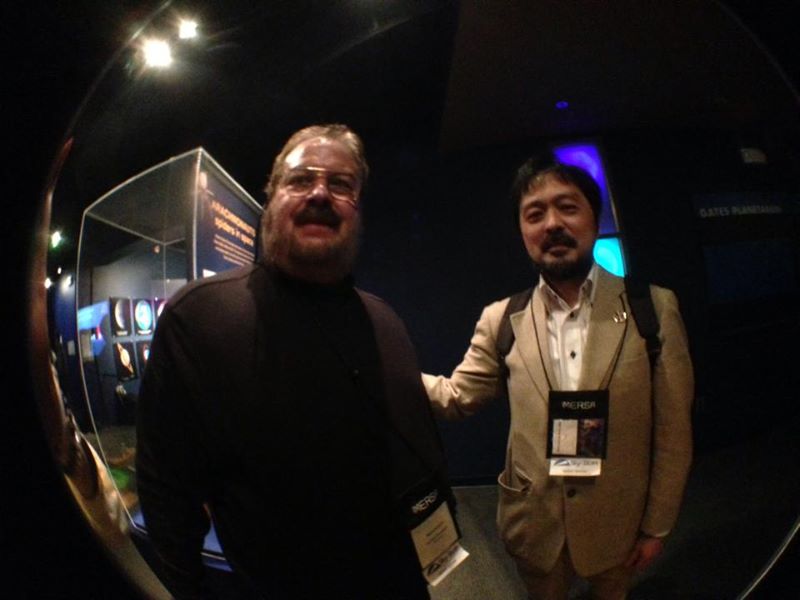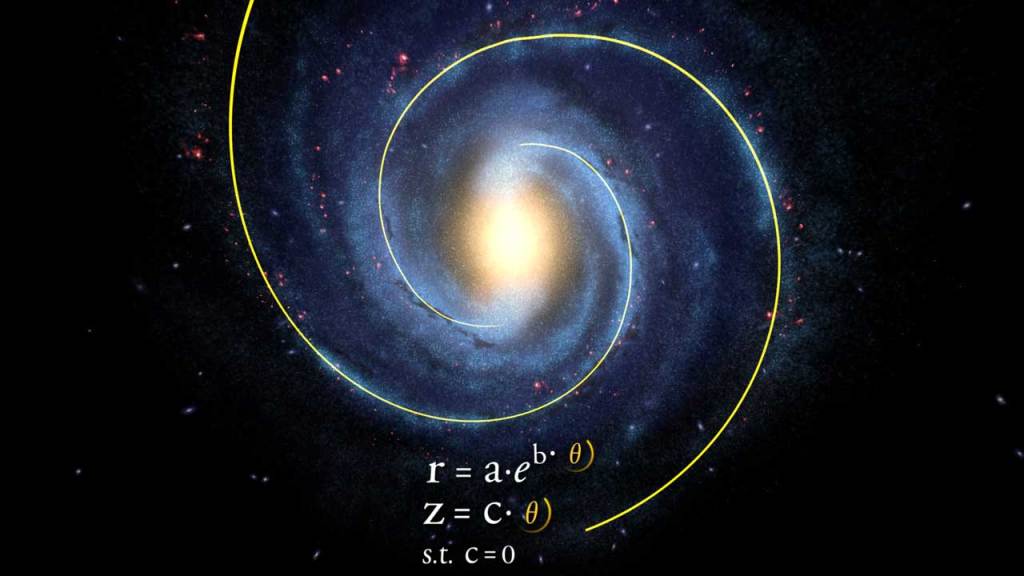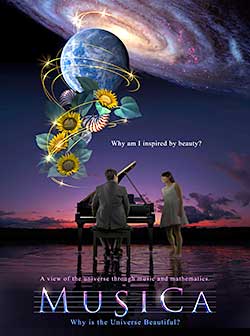 Earlier this year as I was working with the IMERSA conference hosts to bring shows to the meeting, Ryan Wyatt alerted us to the show MUSICA: Why is the Universe Beautiful? and suggested that we show it at the meeting. So, I contacted the producer to get the show on the Gates dome for the IMERSA Summit, and I’m glad I did.
Earlier this year as I was working with the IMERSA conference hosts to bring shows to the meeting, Ryan Wyatt alerted us to the show MUSICA: Why is the Universe Beautiful? and suggested that we show it at the meeting. So, I contacted the producer to get the show on the Gates dome for the IMERSA Summit, and I’m glad I did.
From the moment that musical notes and physics equations appeared on the dome, accompanied by lush backdrops, views of flowers and galaxies, and set to gorgeous music, I was hooked. Judging by the remarks we heard from other attendees, MUSICA struck a chord in their souls, too.
We knew immediately that we wanted to bring this presentation to fulldome audiences. And, as I did when I saw Chaos and Order a couple of years ago, I thought to myself, “People NEED to see this show!”
Why do I say that? Quite simply, MUSICA takes the teaching of physics and mathematics, and even astronomy, out of their normal realm and relates them to music and art. That, to my mind, is a very cool way to teach all four subjects! In the dome, we have the flexibility to take our audiences out of the normal, everyday ways of learning things and help them to relate to objects such as sunflowers, seashells, DNA, and galaxies in a new way.
Certainly it has worked that way for astronomy. Where once we taught “flat” astronomy, we can now fly THROUGH space to visit places that are only dim, blurry objects through a telescope or the naked eye. We can tell the stories of astronomy in a full, rich way, and we’re no longer bound to the surface of Earth, if we don’t want to be. And, that includes using the beauty of art and music as part of the message.
So, imagine trying to teach the physics of waves in an artistic way. Sure, we’ve all done the pencil-and-paper route of deconstructing the equations to understand what each component tells us about waves. We’ve probably all seen videos showing how waves work. But, waves don’t exist without some context, and this is where music and art come in.
Let’s take music. It’s an art. It’s also mathematical, as anyone who has learned to play an instrument or sing can tell you. In physics you can deconstruct a musical tone (which is what examining the wavelength and frequency of that tone does). However, physics does NOT teach you what happens in your mind when you hear that tone, and all the other tones that make up a piece of music. Yes, the ear hears and transmits the tone, and at the point the tone hits your brain, something wonderful happens. The music you hear transports you and your imagination. It stimulates your mind, enforcing learning. It sends a message.
I spent some time talking with MUSICA director Hiromitsu Kohsaka about the science of music and art and what kind of message he hoped people would take from the show. He said, “We can feel the beauty of music without knowing the mathematical theory behind it. I think this is because we have an innate ability to sense its theoretical beauty.”
Hiromitsu wanted to explore what it is that stimulates our ability to perceive beauty in the cosmos.”In terms of the story, the challenge was to deal with a very complex theme and to explain it so that it made sense and that it was relatable,” he said. “The idea of the film was to describe the harmony of the universe through mathematics and music. But such an idea is tricky to explain, and it can easily become a film where it makes no sense at all. So that was a challenge.”
Those of us who know something about music AND science know this challenge all too well. How is it that a tune composed of individual notes and harmonies can spur memory and emotion? For example, whenever I hear Mark’s GEODESIUM piece called “Closer to Home” (on the album Fourth Universe), first composed for a Hubble Space Telescope show, I remember exactly where I was when I first heard it. I remember the section of the show it accompanied. Even more fascinating, as the piece goes along, it stimulates a positive emotion because it’s a pleasure to hear it.
Technically, I suppose I could say that the chord progressions take me on a journey as well, as they present the melody and resolve themselves at the ends of musical phrases. I know (because Mark told me and also because I studied music for some years) about the harmonic structure that goes along with the rhythmic structure. All of those things float in my mind as I listen to the piece. But, the most important fact here is that the piece stimulates my memory and recall—and THOSE are things that we want to stimulate in education. Now, if I listen to that piece of music again, I’ll mentally visualize the wave forms creating the tones I’m hearing, and maybe even think about the physics equations that describe them.THAT is about as multidisciplinary as it gets, folks! And, that’s why you want to have this show in your dome! Imagine being able to have a show that relates not just to the science geeks in your audiences, but speaks to musicians and artists and mathematicians in THEIR language.
The message of MUSICA is truly one of how to appreciate and understand the beauty of everything from flowers to galaxies, through math and phsyics. Hiromitsu talked about this during our conversation. “I think the same can be said about feeling beauty in nature and the universe; that we have an innate ability to sense the truth (meaning Musica) behind nature and the universe,” he said. “This is why we feel they are beautiful. That’s the message behind this film. I also wanted people to feel that one’s existence is extremely precious as we stand in the forefront of the evolution of the universe. And that we carry the key to finding the answers within ourselves.”
MUSICA was produced in Japan, and it embodies that wonderful aesthetic sense that the Japanese producers bring to their shows. It’s well-translated, and is not by any means a dry teaching lesson. It’s an aesthetic tone poem paying homage to the many ways that math, physics, art, and music combine to help us understand how and why objects in the universe exist and act as they do.In answer to the question I sometimes get from clients about “Why should I buy this show?” I can only say, MUSICA will inform both the right and left sides of your brain. In the end, you’ll feel touched by the beauty the show has taught you to understand.
I invite you to explore MUSICA: Why is the Universe Beautiful? It conveys a sense of deep truth in nature and the universe, as Hiromitsu pointed out. “Mankind has tried to get close to that truth through religion and science, but I wanted to tell it through something more personal, from someone’s consciousness. I thought such theme would be perfect for an immersive fulldome film.”
It’s time we spread our wings in the dome and brought in MORE imaginative and beautiful shows like this. MUSICA teaches you music, physics, art, and math not because you’re supposed to be teaching science in the dome). It’s because music and art will teach you and your audiences to recognize the beauty of physics and math and the systems they describe. Together, all four will bring you a deeper appreciation of life and the cosmos in which it exists.

